
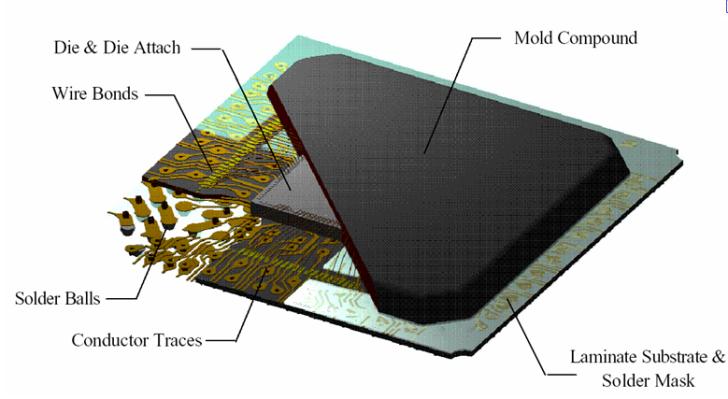
Multicolumn
-
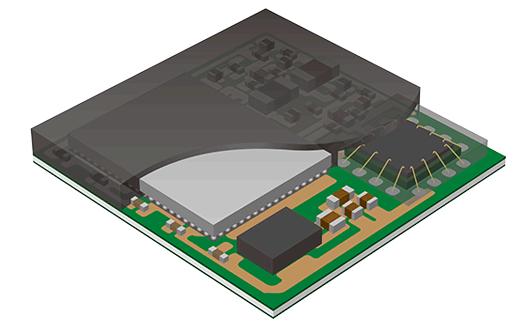
Molding Compound for BGA
-
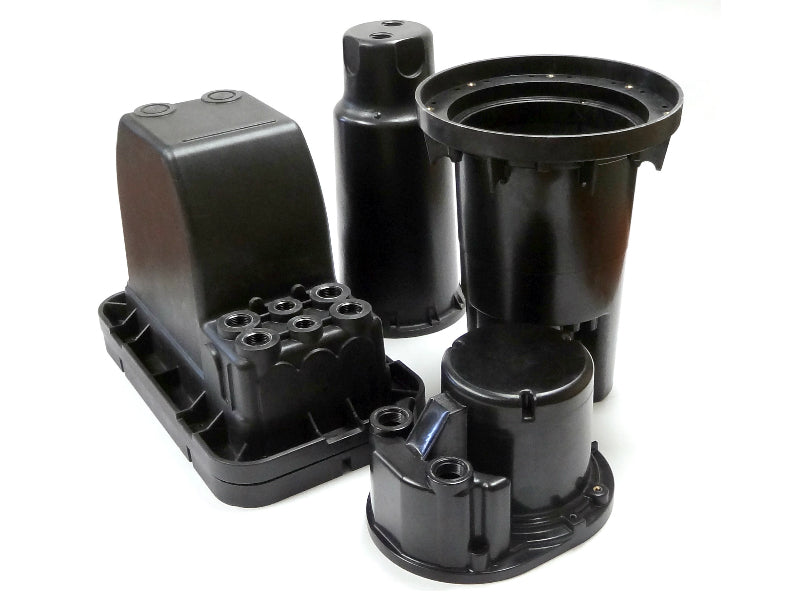
Molding Compound for Compression
-
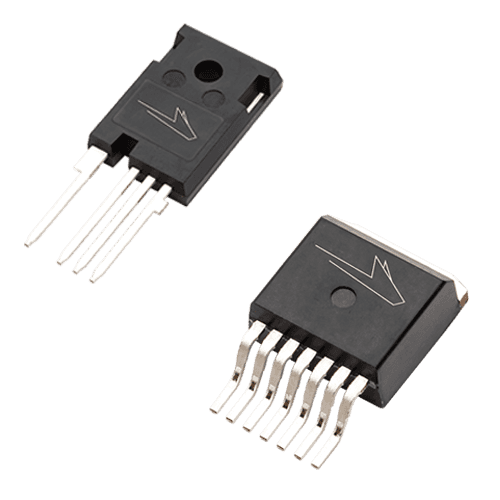
Molding Compound for Discrete Devices
-
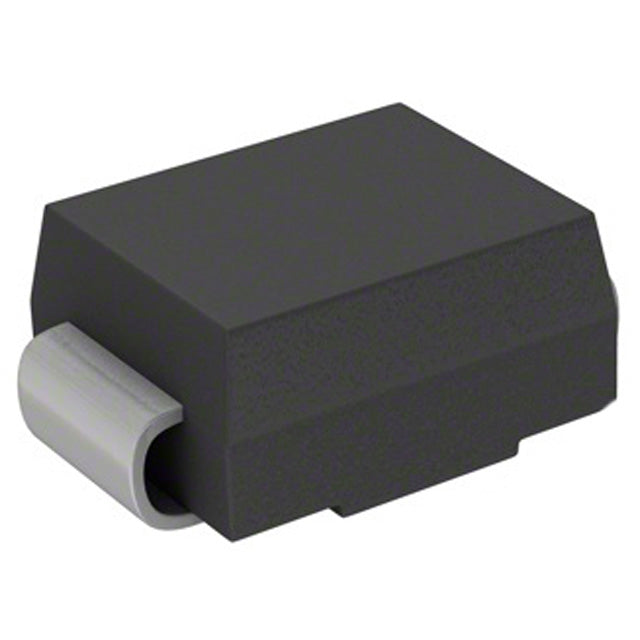
Molding Compound for High-Reliability L/F
-
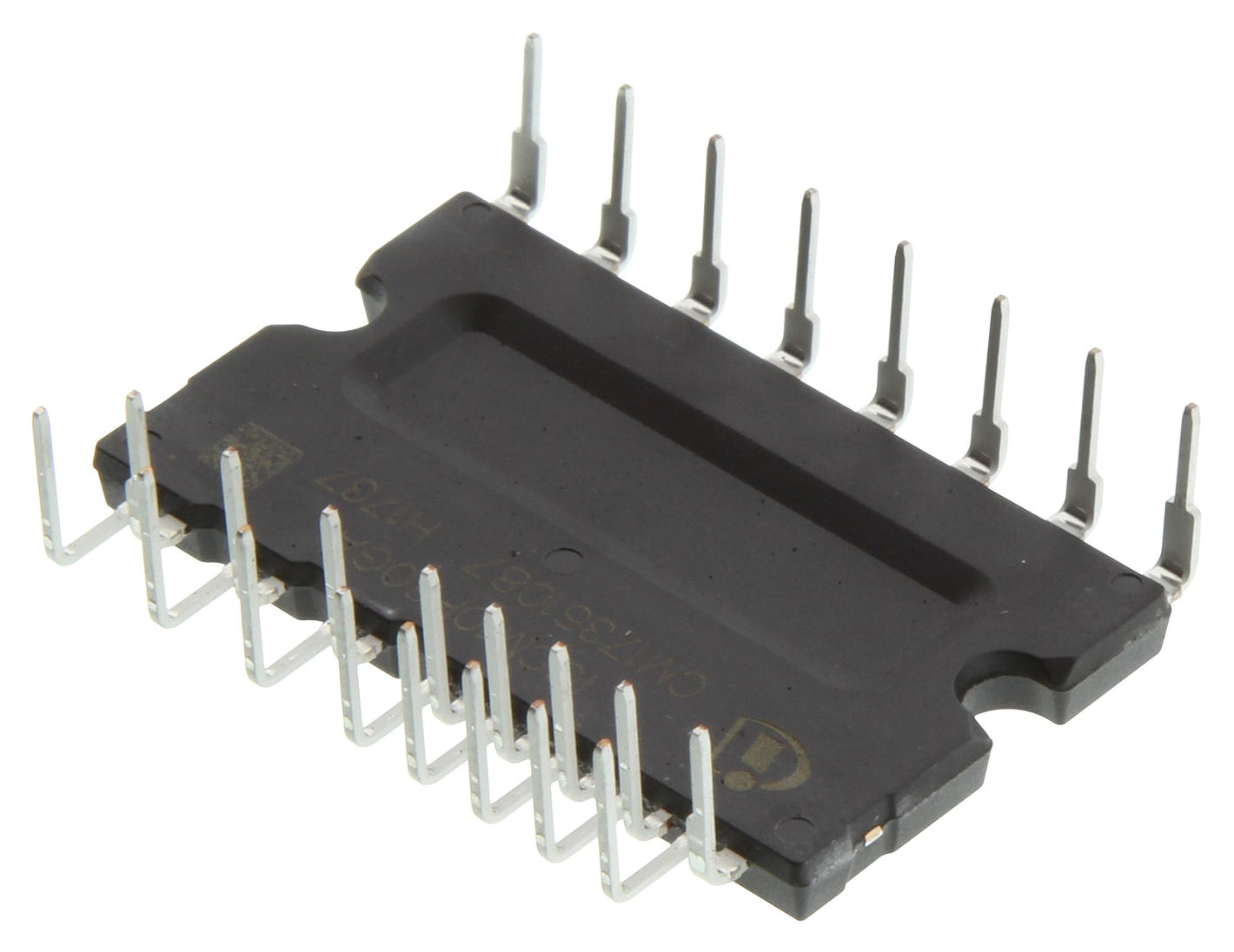
Molding Compound for IPM
-
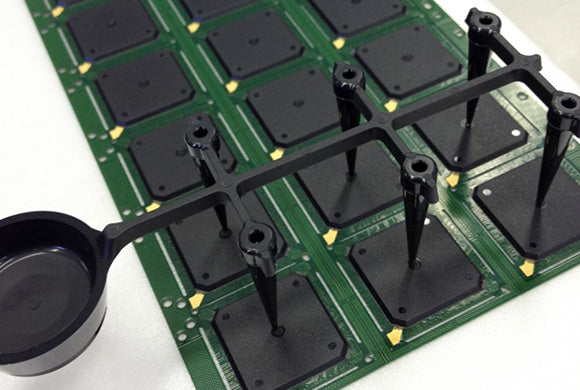
Molding Compound for MUF SiP
Molding Compound for BGA
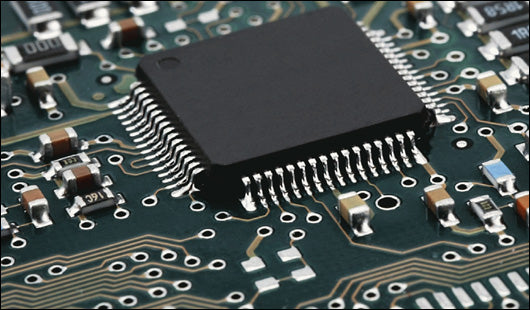
Encapsulation:
They provide a protective covering around the IC chip and wire bonds, shielding them from environmental factors such as moisture, dust, and contaminants.
Thermal Management:
Molding compounds with high thermal conductivity can efficiently dissipate heat generated by the IC chip during operation, preventing overheating and ensuring reliable performance.
Electrical Insulation:
They act as insulating layers between the IC chip and the surrounding components, preventing electrical short circuits.
Mechanical Support:
Molding compounds provide structural integrity to the BGA package, protecting it from mechanical stresses, shocks, and vibrations.
Molding Compound for Compression
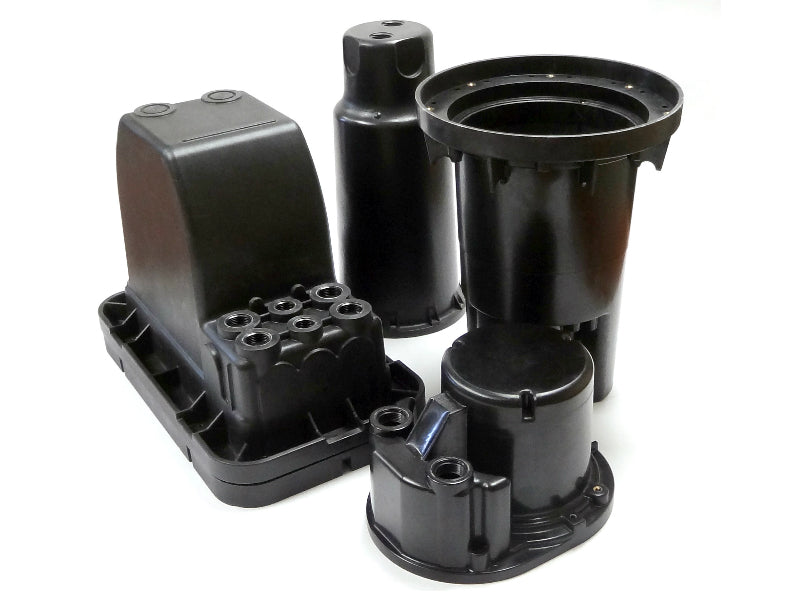
High strength:
Molding compounds are formulated to provide excellent mechanical strength, ensuring the durability and longevity of the molded products.
Thermal stability:
These compounds can withstand high temperatures without degrading, allowing for efficient molding processes and maintaining dimensional stability in the final product.
Electrical Insulation:
Many molding compounds have good electrical insulation properties, making them ideal for applications where electrical conductivity is undesired or poses a safety risk.
Chemical resistance:
Molding compounds often exhibit resistance to various chemicals, enhancing their suitability for applications that may involve exposure to harsh environments or chemical substances.
Dimensional accuracy:
Compression molding compounds can maintain tight tolerances and reproduce intricate details, resulting in molded products with accurate dimensions and high-quality surface finishes.
Good flowability:
Molding compounds with good flow characteristics ensure easy filling of complex mold cavities, allowing for the production of intricate shapes and structures.
Low shrinkage:
Minimizing shrinkage during the molding process helps maintain the dimensional stability and integrity of the final product.
Fast curing:
Some molding compounds offer fast curing times, allowing for shorter production cycles and increased efficiency.
Molding Compound for Discrete Devices
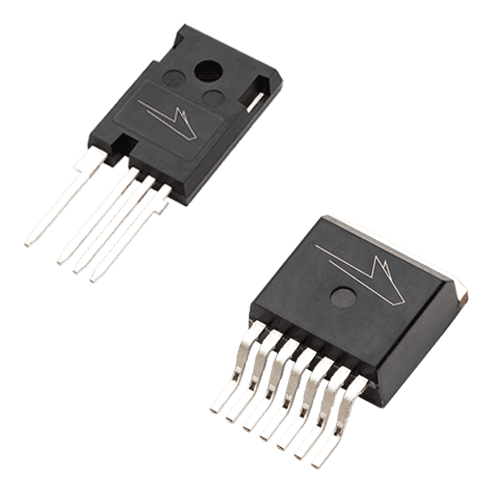
Thermal conductivity:
Discrete devices can generate heat during operation, and it's important to have molding compounds with good thermal conductivity to efficiently dissipate the heat and prevent overheating.
Low moisture absorption:
Moisture can adversely affect the performance and reliability of discrete devices. Molding compounds with low moisture absorption help protect the devices from moisture-related failures.
High dielectric strength:
Discrete devices often require good electrical insulation properties. Molding compounds with high dielectric strength prevent electrical leakage and ensure reliable electrical isolation.
Chemical resistance:
Molding compounds that resist exposure to chemicals and environmental factors help protect the underlying electronic components and ensure their long-term reliability.
Adhesion properties:
The ability of the molding compound to bond well with other components, such as lead frames or substrates, is important for ensuring mechanical stability and long-term reliability.
Low stress during curing:
Excessive stress during the curing process can cause damage to delicate electronic components. Molding compounds that exhibit low stress during curing help minimize the risk of component failure.
Good flowability:
Discrete devices often have complex shapes and intricate features. Molding compounds with good flow characteristics ensure easy filling of small gaps, tight spaces, and intricate structures during the molding process.
Good dimensional stability:
To maintain the precise dimensions of discrete devices, molding compounds with low shrinkage and good dimensional stability are required.
Molding Compound for High-Reliability L/F
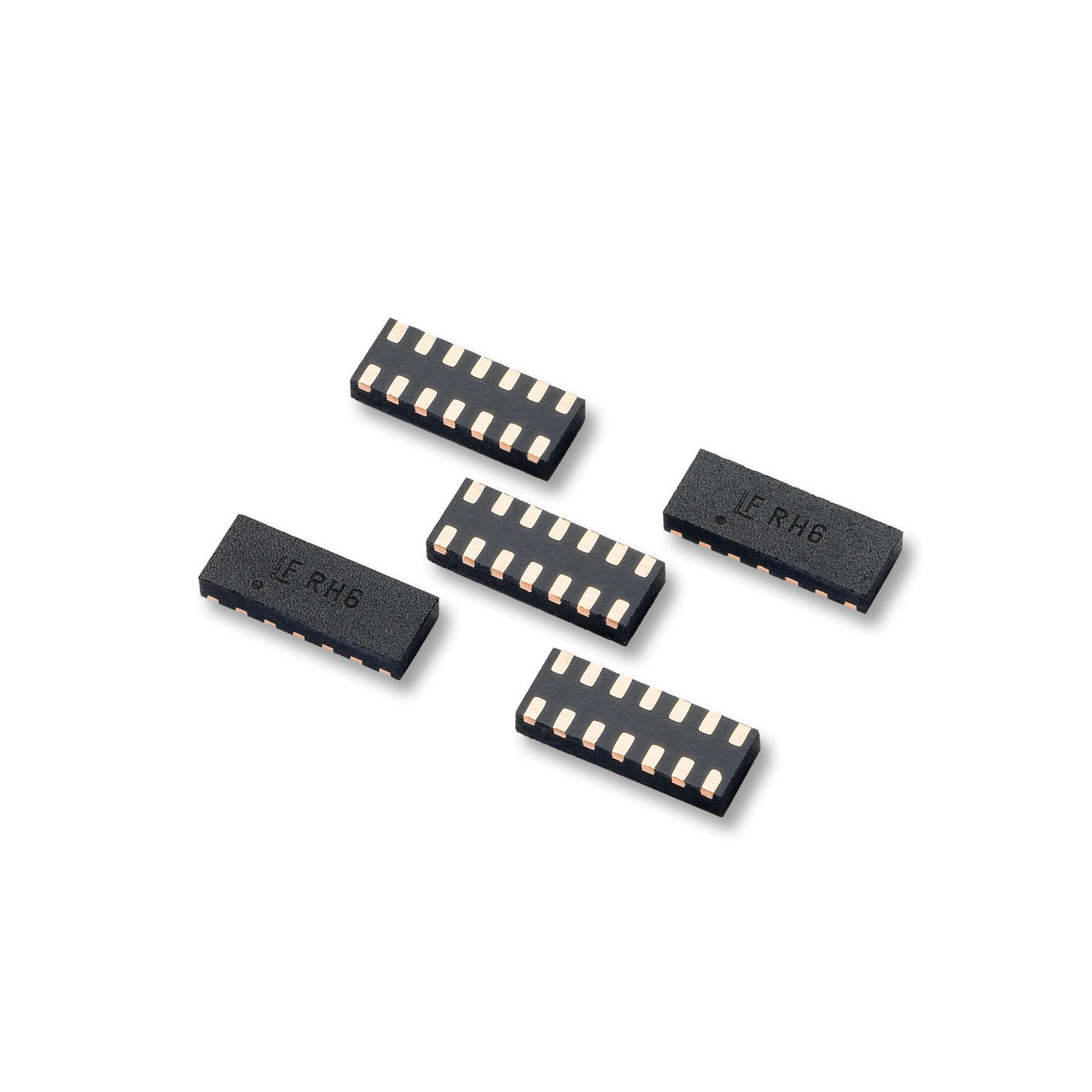
High thermal conductivity:
To effectively dissipate heat generated by the device, a molding compound with high thermal conductivity is desirable. This helps prevent overheating and ensures the long-term reliability of the electronic components.
Low coefficient of thermal expansion (CTE):
L/F features require molding compounds with a low CTE to minimize stress-induced failures. A low CTE helps reduce the possibility of delamination, cracking, or warping of the leadframe during temperature fluctuations.
Good adhesion to the leadframe:
Molding compounds should adhere well to the leadframe material to secure it in place and prevent any movement that could lead to electrical or mechanical failures. Good adhesion ensures the stability and integrity of the L/F features.
Low moisture absorption:
Moisture can impact the performance and reliability of electronic devices. A molding compound with low moisture absorption helps protect the leadframe and electronic components from moisture-related failures, such as corrosion or short circuits.
Excellent mechanical strength:
The molding compound should have sufficient mechanical strength to withstand handling and assembly processes without experiencing damage or degradation. This helps ensure the robustness and durability of the L/F features.
High dielectric strength:
For applications where electrical insulation is crucial, a molding compound with high dielectric strength is essential. It prevents electrical leakage and ensures reliable electrical isolation between different leads of the leadframe.
Good flowability and moldability:
L/F features often have complex shapes and intricate geometries. A molding compound with good flowability and moldability properties allows for easy filling of small gaps, tight spaces, and precise formation of the desired features during the molding process.
Chemical resistance:
The molding compound should exhibit resistance to various chemicals and environmental factors to protect the leadframe from corrosion or degradation over time.
Molding Compound for IPM
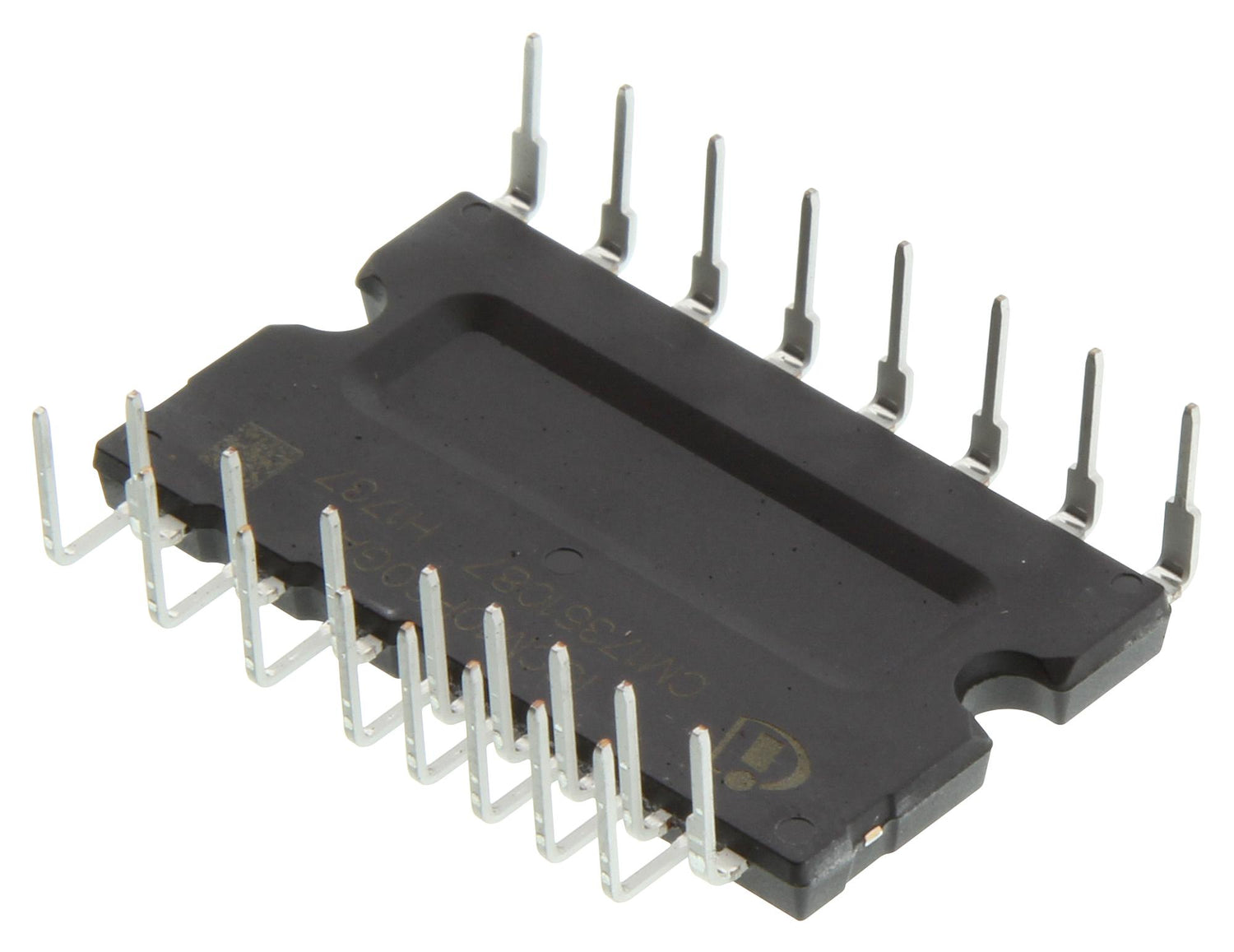
High thermal conductivity:
IPMs generate heat during operation, and effective heat dissipation is crucial for their reliability. A molding compound with high thermal conductivity helps efficiently transfer heat away from the device, preventing overheating and ensuring long-term performance.
Low coefficient of thermal expansion (CTE):
IPM features require molding compounds with a low CTE to minimize stress-induced failures. A low CTE helps reduce the risk of delamination, cracking, or warping of the components during temperature fluctuations, ensuring reliable operation.
Good adhesion to semiconductor materials:
Molding compounds should adhere well to the semiconductor materials used in IPM devices to ensure proper electrical and thermal conduction. Good adhesion is crucial for optimal performance and reliability of the IPM features.
High voltage insulation:
IPMs often operate at high voltages, so the molding compound needs to provide excellent electrical insulation properties. It should have a high dielectric strength to prevent electrical leakage and ensure reliable isolation between different components.
Excellent mechanical strength:
The molding compound should have sufficient mechanical strength to withstand the stresses encountered during assembly, handling, and operation. This helps ensure the durability and reliability of the IPM features.
Resistance to moisture and environmental factors:
Moisture and other environmental factors can degrade the performance and reliability of IPMs. Therefore, the molding compound should have low moisture absorption and good resistance to factors like humidity, temperature, and chemical exposure.
Compatibility with manufacturing processes:
The molding compound should be compatible with the manufacturing processes used to produce IPM devices, such as injection molding or transfer molding. It should have good flowability and moldability to ensure precise replication of complex IPM feature designs.
Molding Compound for MUF SiP
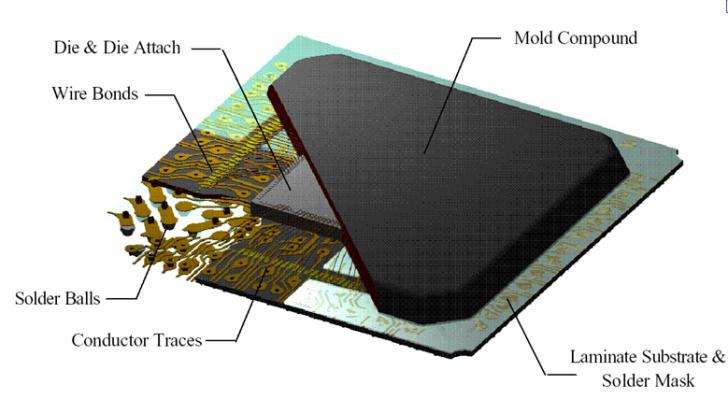
Dielectric properties:
The molding compound should have excellent electrical insulation properties to ensure reliable isolation between different chips or devices within the SiP. It should have a high dielectric strength to prevent electrical leakage and interference.
Thermal conductivity:
MUF SiP features may generate heat during operation, and effective heat dissipation is crucial for their performance and reliability. A molding compound with high thermal conductivity helps efficiently transfer heat away from the chips, preventing overheating and ensuring long-term stability.
Low coefficient of thermal expansion (CTE):
Different chips within the MUF SiP may have different CTEs. Therefore, the molding compound should have a low CTE to minimize stress-induced failures, such as delamination or warping, caused by mismatched thermal expansion coefficients.
Adhesion to different materials:
The MUF SiP may integrate chips made from various materials, such as silicon, gallium arsenide, or indium phosphide. The molding compound should have good adhesion to these different materials to ensure proper electrical and thermal conduction.
Mechanical strength and durability:
The molding compound should provide sufficient mechanical strength to protect the delicate chips and devices within the SiP. It should be able to withstand assembly, handling, and operational stresses without cracking or degrading, ensuring long-term durability.
Moisture resistance and environmental protection:
Moisture and environmental factors can degrade the performance and reliability of the MUF SiP. Therefore, the molding compound should have low moisture absorption and good resistance to humidity, temperature, and chemical exposure, providing protection to the integrated chips.
Compatibility with manufacturing processes:
The molding compound should be compatible with the manufacturing processes involved in building the MUF SiP. It should have proper viscosity for injection molding or other fabrication techniques, allowing for efficient and reliable assembly.
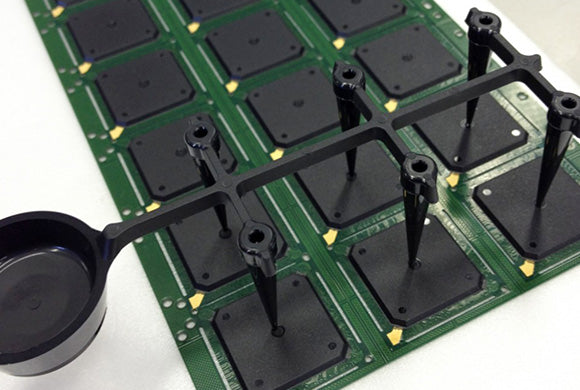
The main purpose of molding compounds is to provide a medium for shaping and forming objects through various molding processes, such as compression molding, injection molding, or transfer molding. They are designed to be easily flowable when heated and then solidify or cure when cooled or exposed to certain conditions.








